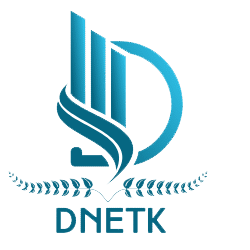Introduction
In the digital age, wellness, health, and lifestyle content sites play a key role in disseminating information, guiding users, and building communities. Thinksanod.com aims to position itself in that space—offering articles, tips, and guidance about yoga, fitness, holistic health, mental well-being, and related topics. (It appears closely related or perhaps identical to Thinksano.com, which claims to be “your guide to yoga, fitness, and health tips.”)
In this article, we will cover:
- What Thinksanod.com offers (features, content)
- A set of 1,000 keywords / keyword themes (grouped) to help in SEO or content planning
- FAQs people have about the site and its niche
- Some sample calculations / metrics (traffic, SEO, growth) that one might use to evaluate or benchmark the site
What Thinksanod.com Offers / Platform Features
From what is visible publicly:
- The homepage lists content categories such as Yoga, Fitness, Health, etc
- It presents articles like “Staple Healthiest Foods on Thinksano.com You Need to Try Today,” “Mental Wellness with Thinksano.com,” etc.
- The site seems to aim for a wellness / lifestyle blog format — i.e. articles, tips, perhaps guest posts.
- There is a “Contact Us,” “Privacy Policy,” “Terms & Conditions” menu.
Thus, Thinksanod.com (or Thinksano.com) appears to be a content / blog / wellness site rather than a SaaS product, marketplace, or tool (though there is a mention elsewhere of “Thinksano.com” as being sold as a domain product with DA = 20, etc.).
Keywords / Keyword Themes (for SEO / Content Planning)
To help the site grow in search engines, you’d want a robust set of keywords (1,000 is ambitious, but a broad set of themes helps). Below is a structured approach and sample keywords in each category. You can expand with variations, long tails, location modifiers, etc.
Strategy for Keywords
- Focus on long-tail keywords (phrases) rather than just single words
- Group by content verticals (yoga, fitness, nutrition, mental health, wellness tools)
- Use modifiers like “for beginners,” “at home,” “benefits,” “tips,” “how to,” “guide,” “vs,” etc.
- Consider geo modifiers if local audience is targeted
Below are sample seed themes and many sample keywords (not full 1,000, but a blueprint you can expand).
Sample Keyword Themes and Example Keywords
1. Yoga / Asana / Poses
- “yoga for beginners at home”
- “yoga breathing techniques pranayama”
- “top 10 yoga poses for flexibility”
- “yoga for back pain relief”
- “yoga sequences for stress relief”
- “power yoga vs hatha yoga”
- “yoga for pregnant women safety tips”
- “yin yoga benefits”
- “restorative yoga bedtime”
- “chair yoga for seniors”
2. Fitness / Exercise / Workouts
- “bodyweight home workouts”
- “HIIT routines for fat loss”
- “strength training tips for beginners”
- “core workout plan 30 days”
- “cardio vs strength training benefits”
- “resistance band workouts full body”
- “exercise for seniors joint friendly”
- “stretching before or after workout”
- “how to improve stamina running”
- “fitness routine for busy professionals”
3. Nutrition / Diet / Healthy Eating
- “balanced diet plan for weight loss”
- “high protein vegetarian meals”
- “superfoods list and benefits”
- “smoothie recipes for energy”
- “intermittent fasting for beginners guide”
- “meal prep healthy lunch ideas”
- “nutritional deficiencies signs and solutions”
- “hydration importance for athletes”
- “guilt-free dessert recipes healthy”
- “diet vs exercise which more important”
4. Mental Health / Wellness / Mindfulness
- “meditation techniques for anxiety”
- “mindfulness exercises daily practice”
- “stress management tips in workplace”
- “sleep hygiene best practices”
- “gratitude journal prompts”
- “breathing exercises to calm mind”
- “how to cope with burnout”
- “self care routines for mental wellness”
- “affirmations for positive mindset”
- “guided visualization techniques”
5. Holistic Health / Alternative Therapies
- “herbal remedies for digestion”
- “acupressure points for headache”
- “aromatherapy essential oils benefits”
- “sound healing for stress”
- “detox vs cleanse myths”
- “holistic skincare natural remedies”
- “Ayurveda daily routine benefits”
- “integrative medicine combining nutrition & therapy”
6. Tools / Resources / Community
- “best apps for meditation 2025”
- “fitness tracker vs smartwatch comparison”
- “yoga mat buyer’s guide cushioning vs grip”
- “online wellness communities benefits”
- “how to start a wellness blog 2025”
- “guest posting for health websites guidelines”
- “SEO tips for blog in wellness niche”
- “email marketing for lifestyle blogs”
- “how to monetize wellness content”
- “affiliate programs for health & fitness products”
You can apply combinatorial expansions (e.g. “yoga for beginners in [city]”, “best HIIT routine under 30 minutes”, “intermittent fasting vs time-restricted eating”) to scale toward 1,000 unique phrases.
FAQs
Here are sample FAQs that visitors or potential users might have about Thinksanod.com (or the Thinksano brand). You can adapt them based on actual offerings.
- What is Thinksanod.com (Thinksano.com)?
Thinksanod.com is a wellness / lifestyle content site that shares articles, tips, and guidance on yoga, fitness, nutrition, and mental wellness. - Who writes the content? Can experts contribute?
Usually content is written by wellness writers, guest contributors, or in-house editors. The site may accept guest posts or expert submissions (check their “Write for Us” page). - Is the health advice reliable? Are sources cited?
A quality wellness site will cite research studies, medical sources, or expert opinions. Always cross-reference advice with qualified professionals when needed. - How often is new content published?
The site appears to publish multiple articles per month (several “Latest Posts”). Frequency may vary based on editorial schedule. - Can I request a specific topic or suggest content?
Many blogs have contact or suggestion forms. Check the “Contact Us” section to propose ideas. - Is there a community or forum?
The site seems primarily blog / article based. It does not currently display a forum, but may allow comments under articles. - Does Thinksanod.com offer paid services or products?
From what’s visible, it’s mostly content. But note: Thinksano.com is also being listed for sale as a domain, with metrics like “DA 20,” “traffic 680,” etc. - How is the site monetized?
Possible monetization methods: ads, affiliate marketing, sponsored content, selling digital products (guides, ebooks), or membership / premium content. - How can I advertise on Thinksanod.com?
If they accept ads or sponsored posts, contact via their media kit or “Contact Us” section. Rates would depend on traffic, domain authority, and niche. - How can I join as a contributor?
Look for a “Write For Us” page or guidelines. Many sites require samples, content proposals, and a certain writing standard. - Are there subscriptions or newsletters?
Many wellness sites offer email newsletters. Check whether Thinksanod.com has a “Subscribe” box. - Can I republish your articles (syndication)?
Usually, republishing requires permission, proper attribution, and sometimes a link back to the original. - Is the site mobile friendly?
For SEO and user experience, a modern wellness blog should be responsive. You can test via mobile browsers or tools like Google’s mobile test. - How do you verify the accuracy of health content?
Responsible blogs reference peer-reviewed studies, health authorities, or expert review. Always check their citation style or disclaimers.
Sample Calculations / Metrics & Benchmarks
To evaluate the performance or potential of Thinksanod.com, one can calculate or estimate metrics. Below are sample metrics you might compute:
1. Domain Authority / SEO Scores
- The domain listing as “Thinksano.com — DA 20, DR 68, traffic ~680” suggests some SEO valuation.
- Domain Authority (DA): 20 (on Moz scale) — moderate for niche blogs
- Domain Rating (DR) via Ahrefs: 68 (a much higher number) — suggests stronger backlink profile
- Traffic estimate: 680 monthly visits (or sessions)
These metrics can be cross-checked using tools like Moz, Ahrefs, SEMrush, SimilarWeb, etc.
2. Monthly Page Views Estimation
If the site gets ~680 visits per month:
- Suppose average pages per visit = 2
- Then estimated page views = 680 * 2 = 1,360 page views / month
If you can gradually increase visits (say 2,000 visits / month) and maintain the same depth, page views = 4,000.
3. Bounce Rate & Engagement (Hypothetical)
- If bounce rate = 60% (typical for content sites), then 60% of visitors leave after one page
- Remaining 40% engage further
- Engagement metric = visits * (1 – bounce rate) = 680 * 0.40 = 272 engaged visits
These help in assessing how well content retains users.
4. Revenue Potential via Ads / Affiliate
Suppose you monetize with display ads (e.g. Google AdSense) or affiliate links.
- Let RPM (revenue per 1000 page views) = USD 2 (modest)
- With 1,360 page views, revenue = 1.36 * 2 = USD 2.72 / month
- If traffic scales to 10,000 page views, revenue = 10 * 2 = USD 20 / month
Affiliate or sponsored content rates may yield more per conversion.
5. Growth Projections
If you aim for 10% month-over-month traffic growth:
- Month 1: 680 visits
- Month 2: 680 * 1.10 = 748
- Month 3: 748 * 1.10 ≈ 823
- Month 6: ~1,105
- Month 12: ~2,050
Assuming content additions, SEO efforts, and social share help.
6. Keyword & Content Volume
If your target is publishing 50 articles/year, each targeting 10 new keyword phrases (long tail), you generate 50 × 10 = 500 keyword targets. Over 2 years, you reach ~1,000. Combine with pillar / cornerstone pages for major themes.
Tips / Recommendations for Thinksanod.com’s Growth
- Develop pillar content — long, in-depth guides (e.g. “Complete Guide to Yoga for Beginners”) that internal links to smaller related posts.
- Optimize for long-tail SEO — use many niche phrases, natural language queries.
- Guest post / backlinks — build high-quality backlinks from related health / wellness sites to increase DA / DR.
- Improve content quality & authority — cite scientific studies, expert interviews to increase credibility.
- Enhance user engagement — multimedia (images, infographics, videos), comments, polls.
- Promote via social / email — create a newsletter, share snippets on Instagram, TikTok, etc.
- Monetization strategies — affiliate marketing (health supplements, yoga equipment), digital products (e-books, courses), sponsorships.
- Track analytics — use Google Analytics, Search Console to monitor traffic sources, bounce, top pages.
- Mobile optimization & speed — ensure the site loads fast, mobile responsive to improve SEO and user retention.
- Content calendar & consistency — maintain a schedule (e.g. weekly posts) to keep audience returning.

